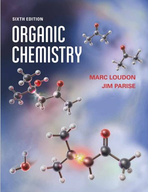The d 1.21.5 region of the 300-MHz NMR spectrum of 1-chlorohexane, given in Fig. 13.13
Chapter 13, Problem 13.23(choose chapter or problem)
The d 1.21.5 region of the 300-MHz NMR spectrum of 1-chlorohexane, given in Fig. 13.13, is complex and not first-order. Assuming you could synthesize the needed compounds, explain how to use deuterium substitution to determine the chemical shifts of the protons that absorb in this region of the spectrum. Explain what you would see and how you would interpret the result
Unfortunately, we don't have that question answered yet. But you can get it answered in just 5 hours by Logging in or Becoming a subscriber.
Becoming a subscriber
Or look for another answer
